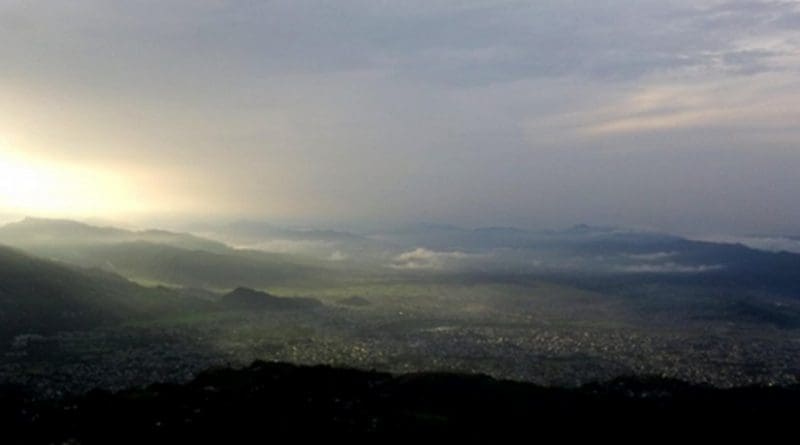Seizing ‘The Belt And Road’ Opportunity: Challenges For Nepal – Analysis
By IPCS
By Pramod Jaiswal*
Nepal signed China’s Belt and Road Initiative (BRI) before the BRI Summit. During the BRI summit held in Beijing, the Nepalese Minister for Physical Infrastructure and Transport proposed to the Chinese Transport Minister to link Nepal’s border with road and railways connectivity. In this context, what are the opportunities and challenges for Nepal from China’s BRI?
China’s Motivations for Implementing the BRI
The BRI is China’s most ambitious foreign policy and economic initiative and President Xi Jinping’s dream project. Ever since he announced the BRI towards the end of 2013, over 66 countries in Asia, Africa, West Asia and Europe have become the part of the initiative. It has two main components – the Silk Road Economic Belt connecting China with Europe through Central Asia by land, and the Maritime Silk Road Initiative connecting China to Southeast Asia, South Asia and Africa via a web of roads, high-speed rail, power lines, ports, pipelines, optic fiber lines and other infrastructure. Roughly, it comprises 70 per cent of the world’s population and Chinese investment worth US$4 trillion.
There are several factors motivating the BRI. First, China wants to reduce the transportation costs of goods around the world. Second, it has huge surplus of construction materials, and hence, is looking for opportunities overseas. Third, the infrastructure focus helps China in its quest for greater international stature for the renminbi, to achieve the status of a global reserve currency. Fourth, through the BRI, China wants to secure energy supply through new pipelines in Central Asia, Russia, and Southeast Asia’s deepwater ports. Fifth, the development in infrastructure in countries along the BRI routes may increase growth in their economies which will contribute to a growing demand for China’s goods and services.
BRI and Nepal
Although Nepal is geographically positioned between two of the largest economies of the world, it has been untouched by their prosperity. Among several others, the prominent reason is a lack of infrastructure and connectivity with its neighbours.
Historically, Nepal has been the entrepôt between South Asia and China. There are a large number of Nepali traders residing in Lhasa and other parts of Tibet. During the reign of the Malla dynasty, Lhasa was a vibrant point for traders. However, at present, Nepal and China have few designated routes for trade, though both the countries enjoy good mutual relations. Hence, through BRI, Nepal can again revive itself as an entrepôt.
Nepal can gain from the BRI by working at three levels. First, Nepal can improve its connectivity with China by building highways and railways between them. Second, Nepal can also seek a role in the BCIM (Bangladesh, China, India and Myanmar) Economic Corridor by connecting Kathmandu to Kunming and Kolkata as the Qinghai-Tibet Railway is already extended to Xigatse and the Greater Mekong Sub-region has also improved. Third, is through the prospects of Nepal-India-China trilateralism. All three countries can invest in Nepal’s hydropower and tourism sectors. Nepal is rich in water resources with a huge potential for hydropower. Both India and China have capital and technology to generate it and an energy-deficient India can be a market for it. Similarly, Nepal has the opportunity to develop as a sought after tourist destination; the rising middle class of the two most populous countries of the world, India and China, would be the potential market.
Nepal has developed north-south road corridors, which provide the possibility of increasing connectivity between India and China through Nepal. The construction of the proposed Kathmandu-Nijgadh Fast-Track road is expected to reduce the distance between Raxaul and Kerung by nearly 150kms. An extension of the Qinghai-Tibet Railway to Kathmandu and further to Lumbini will create huge opportunities for Nepal. Several Special Economic Zones are proposed along the route. Nepal also has the potential to emerge as the new trade route for products from China (Tibet) and India (Uttar Pradesh and Bihar).
Challenges
Although the BRI offers tremendous opportunities to Nepal, it has several challenges as well. India is alarmed by China’s plan to extend the Qinghai-Tibet Railway line to Kathmandu and further to Lumbini, which is 17km from the Indian border. It is equally concerned due to other infrastructure projects being proposed along the Nepal-China border. In response to China’s Qinghai-Tibet Railway, India proposed to build six rail links with Nepal that would be connected to the Indian railway grid: Raxaul, Jogbani and Jayanagar in Bihar, India, to Birgunj, Biratnagar and Bardibas in Nepal. In Uttar Pradesh, India, it will connect Nautanwa and Nepalgunj and in West Bengal, India, it will connect New Jalpaiguri with Kakarbhitta.
India, which has a strong influence on Nepal’s foreign policy, officially abstained from the BRI Summit. It strongly opposed the BRI on grounds of sovereignty and other strategic concerns. This makes it a greater challenge for Nepal to taste the gains of BRI. Nepal also needs to address the genuine security concerns of both its neighbours, take them into confidence and build a favourable environment. Else, for Nepal, the BRI will remain a dream of prosperity than prosperity itself.
*Pramod Jaiswal
Senior Fellow, IPCS
E-mail: [email protected]

